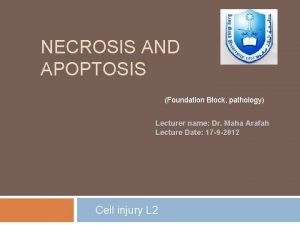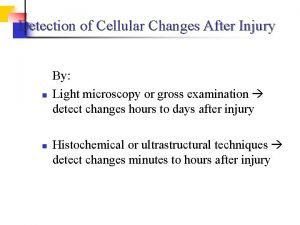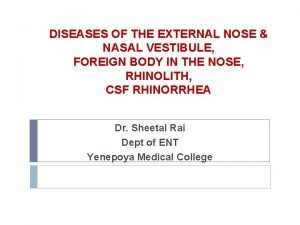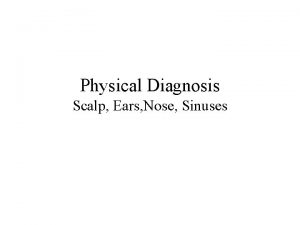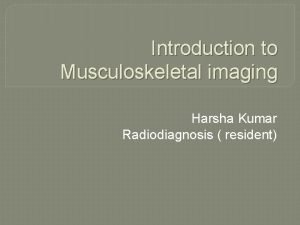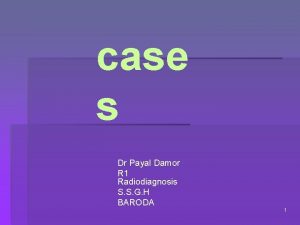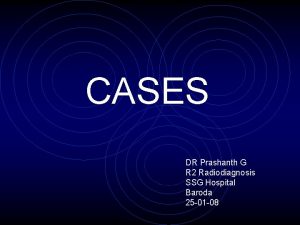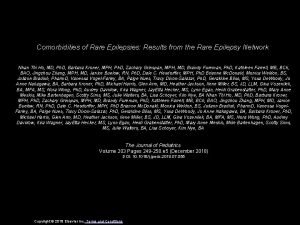DEPARTMENT OF RADIODIAGNOSIS Scalp swelling A rare presentation

























![Mechanism of scalp metastasis[3] Abdominal visceral malignancy Venous communications to vertebral venous plexus Intracranial Mechanism of scalp metastasis[3] Abdominal visceral malignancy Venous communications to vertebral venous plexus Intracranial](https://slidetodoc.com/presentation_image_h2/9c1411cab9ad432f87713594ef5adeb0/image-26.jpg)





- Slides: 31

DEPARTMENT OF RADIO-DIAGNOSIS Scalp swelling – A rare presentation of a metastasis Presenting Resident: Dr Nagi Reddy (JR-III) Guide: Dr Sanjay M Khaladkar Head of the Department : Dr R S Kuber

History 44 year old female patient, presented with – • Tender swelling over the right frontotemporal region. • Associated with pain and watering in the right eye. • No H/O trauma/fever.

USG- LOCAL SWELLING • • • An ill-defined heterogeneous solid lesion over the right temporo-frontal region measuring approx. 4 x 3 x 1 cm, with central and peripheral vascularity on color Doppler. However underlying soft tissue and bone involvement could not be clearly delineated. MRI was advised.

Radiograph skull- Waters view

T 1 WI T 2 WI

Pre-con DWI Postcon


After 2 months Patient came with fresh complaints; • C/O yellowish discoloration of eyes since 1 week • Pain over the right hypochondriac region. • Newly developed swelling over the right arm.

USG - ABDOPELVIS • Liver shows asymmetrically dilated Intrahepatic biliary radicals in both lobes, due to a nearly isoechoic ill-defined mass lesion at the bifurcation of common hepatic duct which is also marginally infiltrating into the cystic duct. This mass lesion measured around 6 x 5 x 4 cm compressing & displacing the portal vein which appears normal in caliber.

• Gall bladder is slightly over-distended (Volume is around 80 cc) & shows a significantly thickened wall, measuring around 7. 5 mm. Gall Bladder lumen shows mild sludge seen within. CBD collapsed & measuring around 1 mm in diameter.

Unenhanced Venous Portal Arterial Delayed



Maximum Intensity Projection (MIP)

Post biliary stenting

Biopsy from liver lesion Pathology - Poorly differentiated sclerosing cholangiocarcinoma.




DIAGNOSIS Hilar cholangiocarcinoma with hepatic parenchymal infiltration and involving 1 st order RHD, LHD, proximal CBD and cystic duct. [ Bismuth classification - Type V ] Regional and distant nodal spread, skeletal, spinal and cutaneous metastasis -- being the rarity of this case. TNM staging - Stage IVB

TREATMENT • • • Extrahepatic biliary drainage and metallic biliary stent placement done with two stents. 4 Cycles of chemotherapy was given with FOLFOX. Kept on Capecitabine tablets.

Follow up scan after 2 months Arterial Venous Delayed

DISCUSSION • • Cholangiocarcinomas are rare malignant epithelial tumors arising from the biliary tree and have a poor prognosis and high morbidity Types of Cholangiocarcinoma: o 1) Intrahepatic o 2) Hilar o 3) Extrahepatic

• • These are prone to metastasize to the lung, liver, peritoneum, and retroperitoneal lymph nodes, while cutaneous metastasis is uncommon. Cutaneous metastasis o 1) Seeding along o PTBD tract o 2) Distant metastasis o hematogeneous route

• There are few reports about cutaneous metastasis of cholangiocarcinoma, included following sites: – – Scalp - most common region for cholangiocarcinoma Axillary region Thigh Arm [1, 2]
![Mechanism of scalp metastasis3 Abdominal visceral malignancy Venous communications to vertebral venous plexus Intracranial Mechanism of scalp metastasis[3] Abdominal visceral malignancy Venous communications to vertebral venous plexus Intracranial](https://slidetodoc.com/presentation_image_h2/9c1411cab9ad432f87713594ef5adeb0/image-26.jpg)
Mechanism of scalp metastasis[3] Abdominal visceral malignancy Venous communications to vertebral venous plexus Intracranial venous sinuses Emissary veins Scalp veins

Approach to cutaneous metastasis • Cutaneous metastasis are solitary/multiple, usually <2 cm in size and comprises of 5% visceral malignancies and 2% of cutaneous malignancies. [4, 5] Few underlying malignant causes : • Melanoma (Overall most common malignancy) • Ca. Breast (MC visceral malignancy) • Ca. Lung • Ca. Ovary • Colorectal carcinoma • Oral squamous cell carcinoma • Ca. Prostate • Rarely cholangiocarcinoma.

Clinically or Radiologically suspicious cutaneous lesion Basic radiological survey Female CXR USG Breast/Mammo USG abdo-pelvis Male CXR USG abdo-pelvis TRUS (If indicated) Further cross sectional imaging can be done with CT/MRI/PET based on the findings obtained through above mentioned investigations

CONCLUSION • Whenever addressing scalp metastasis of unknown origin, we should keep the possibility of bile duct-derived carcinoma in mind.

REFERENCES 1. Varma K, Singh A, Misra V. Cutaneous Metastasis from Cholangiocarcinoma Presenting as Thigh Mass. Journal of clinical and diagnostic research: JCDR. 2016 Sep; 10(9): ED 23. 2. Baghmar S, Panda D, Arora A, Patidar Y, Yadav V, Rastogi A. Cutaneous metastasis from intrahepatic cholangiocarcinoma. Tropical Gastroenterology. 2017 Jun 22; 38(2): 125 -7. 3. Lu CI, Wong WR, Hong HS. Distant cutaneous metastases of cholangiocarcinoma: report of two cases of a previously unreported condition. Journal of the American Academy of Dermatology. 2004 Aug 1; 51(2): 108 -11. 4. Juan YH, Saboo SS, Tirumani SH et-al. Malignant skin and subcutaneous neoplasms in adults: multimodality imaging with CT, MRI, and 18 F-FDG PET/CT. AJR Am J Roentgenol. 2014; 202 (5): W 422 -38. doi: 10. 2214/AJR. 13. 11424 - Pubmed citation 5. Manohar K, Mittal BR, Bhattacharya A et-al. Asymptomatic Distant Subcutaneous Metastases Detected by (18)F-FDG-PET/CT in a Patient with Breast Carcinoma. World J Nucl Med. 2012; 11 (1): 24 -5. doi: 10. 4103/1450 -1147. 98742 - Free text at pubmed Pubmed citation

Thank you
 Corte axial
Corte axial What is a soliloquy?
What is a soliloquy? Midline neck swelling
Midline neck swelling Periarticular soft tissue swelling
Periarticular soft tissue swelling Profalam
Profalam Iv site pain and swelling
Iv site pain and swelling Iv site pain and swelling
Iv site pain and swelling Cross fluctuation test in swelling
Cross fluctuation test in swelling Cervical sinus
Cervical sinus Polimastia ascellare
Polimastia ascellare Conjunctival swelling
Conjunctival swelling Liquefactive necrosis
Liquefactive necrosis Mitochondrial swelling
Mitochondrial swelling Salivary gland swelling
Salivary gland swelling Fibrin cuff theory
Fibrin cuff theory Internal ring test
Internal ring test Extranasal meningoencephalocele
Extranasal meningoencephalocele Lymph nodes swelling in stomach
Lymph nodes swelling in stomach Fish thieves take rare seals
Fish thieves take rare seals Corioretinita
Corioretinita Facteur rare
Facteur rare L'eau en espagne une ressource rare sous pression
L'eau en espagne une ressource rare sous pression Fundamentals of the nervous system and nervous tissue
Fundamentals of the nervous system and nervous tissue The simplest of all fingerprint patterns is the
The simplest of all fingerprint patterns is the Common properties of alkali metals
Common properties of alkali metals Animals in moldova
Animals in moldova Fais toi rare ta valeur sera haute
Fais toi rare ta valeur sera haute Basic concepts of strategic management
Basic concepts of strategic management What is the rare event rule
What is the rare event rule Rare event rule for inferential statistics
Rare event rule for inferential statistics Dali y john lennon
Dali y john lennon Types of autism
Types of autism











